#28 April 1788
Explore tagged Tumblr posts
Text






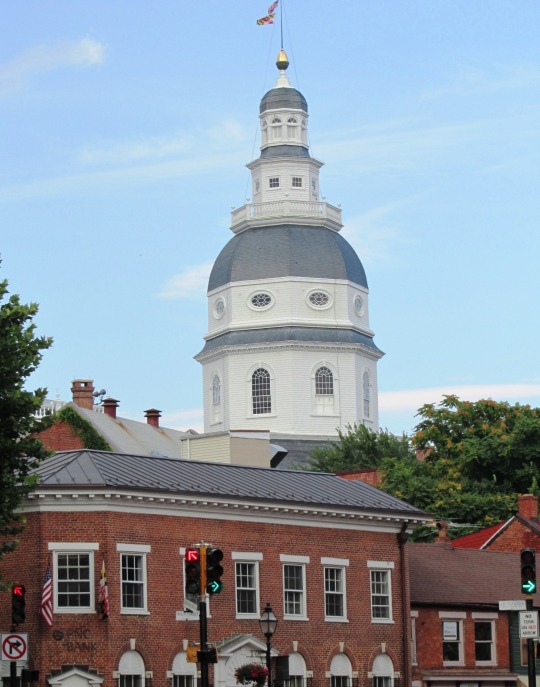


















Maryland became the seventh state to ratify the United States Constitution on April 28, 1788.
#Maryland#7th US State#ratified#US Constitution#28 April 1788#US history#anniversary#Annapolis#summer 2013#original photography#travel#vacation#architecture#tourist attraction#landmark#cityscape#Maryland State House#government house#USA#Mid-Atlantic Region#church#street scene#exterior
1 note
·
View note
Photo

Albert Sidney Johnston: The Highest-Ranking General Killed in the US Civil War
Albert Sidney Johnston (1803-1862) was the commander of the Confederate western armies in the early months of the American Civil War (1861-1865). Over the course of his 34-year military career, Johnston served in the armies of three republics – the Republic of Texas, the United States, and the Confederate States – and, in 1861, was granted the rank of full general by his friend, Confederate President Jefferson Davis (1808-1889), who considered him the greatest soldier in the country. Johnston was killed at the Battle of Shiloh (6-7 April 1862), earning him the distinction of being the highest-ranking soldier to be killed on either side during the war.
Early Life & Career
Johnston was born on 2 February 1803 in the small frontier town of Washington, Kentucky. His father, Dr. John Johnston, was a New Englander who had migrated to Kentucky in 1788, driven by the great American desire to go west. As one of the only trained physicians on that frontier, Dr. Johnston soon established a large and successful medical practice. His first wife died only a year after coming to Kentucky, but the doctor did not wait long before remarrying to Abigail Harris, a young woman whose family had also moved to the frontier from New England (it is somewhat ironic, then, that one of the Confederacy's most admired generals was descended from New England Yankees on both sides of his family). Albert Sidney, the couple's fifth child, was only three when his mother died; raised by his older sisters and stepmother, the boy was said to have been a 'healthy and cheerful' child who inherited the 'frank and manly demeanor' of his father (Roland, 9).
In 1818, the 15-year-old Johnston enrolled in Transylvania University in nearby Lexington, Kentucky, where he hoped to follow in his father's footsteps by studying medicine. He was a popular and diligent student who excelled in his studies, particularly in mathematics. However, by 1822, Johnston realized that a medical career was not right for him, and he decided to seek a military career instead. He was admitted into the prestigious United States Military Academy at West Point, New York, where he quickly impressed both his instructors and fellow cadets with his charming, gentlemanly personality; "his nature was truly noble," one classmate wrote, "untouched by anything small or contracted" (quoted in Roland, 17). He was quick to make friends, including future Confederate leaders Jefferson Davis and Leonidas Polk (1806-1864); he was also cordial with Robert E. Lee (1807-1870), two classes below him, although the two were not close. Alongside his popularity, Johnston was also a model cadet. In 1826, he graduated eighth in his class of 41.
Breveted a second lieutenant in the US Army, he was first stationed at Sackets Harbor on Lake Ontario, a quiet posting that left him little to do other than attend drills and read his books. He was then transferred to Missouri, where, in August 1827, he was sent on an expedition to hunt down a group of Winnebago Native Americans suspected of murdering White settlers. After travelling up the Wisconsin River, Lieutenant Johnston and the other US soldiers met with a council of Winnebago leaders, who agreed to hand over the individuals responsible for the murders to avoid reprisals by the US. One of the Winnebago prisoners, a man named Red Bird, made a strong impression on Johnston in the way he conducted himself after his captivity. Johnston wrote: "I must confess that I consider Red Bird one of the noblest and most dignified men I ever saw. When he gave himself up…he said, 'I have offended. I sacrifice myself to save my country'" (quoted in Roland, 23).
While attending a ball in St. Louis, Missouri, Johnston was introduced to Henrietta Preston, a striking young woman of "poise and dignity" (Roland, 28). They were married on 20 January 1829, and Johnston spent many of the following months on leave in Louisville, Kentucky, with his wife's family, where he passed the time "pleasantly and quietly in the country, reading, shooting the rifle, etc." (ibid). After the birth of their first son in January 1831, Johnston returned to active duty. The next year, the US northwestern frontier was invaded by Native Americans under the Sauk leader Black Hawk (circa 1767-1838), sparking the Black Hawk War (April – August 1832). During that brief conflict, Johnston served as chief-of-staff to Brevet Brigadier General Henry Atkinson, who commended him for his "talents of the first order, a gallant soldier by profession and education, and a gentleman of high standing and integrity" (quoted in Roland, 243).
Read More
⇒ Albert Sidney Johnston: The Highest-Ranking General Killed in the US Civil War
14 notes
·
View notes
Text
April 28, 2010
Homestuck Day 307
New Pages: 1779 - 1788
% Completion (Pages): 21.99
% Completion (Time): 14.90
7 notes
·
View notes
Text
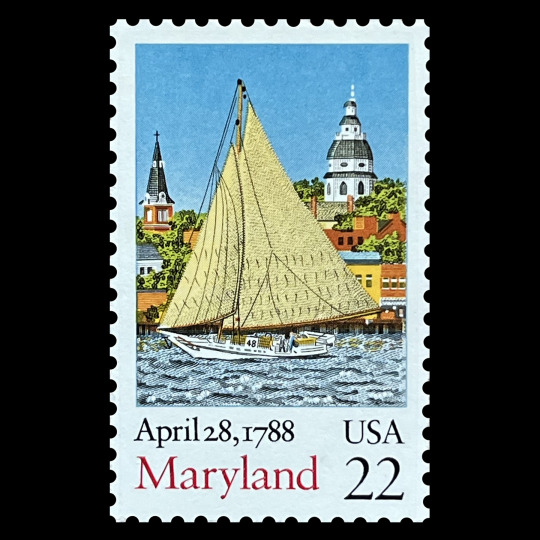
US postage stamp, 1988 “Maryland Bicentenary Statehood” Scott #2342
Issued: February 15, 1988 - Annapolis, Maryland Quantity: 103,325,000 Designer: Stephen Hustvedt Printed By: Bureau of Engraving and Printing (Lithographed, engraved, & photogravure)
On April 28, 1788, Maryland was the seventh state to ratify the US Constitution, an act that admitted it as America’s seventh state.
#stamp#mail#stamps#stamp collecting#postage#stamp collection#usps#postage stamps#philately#philatelic#maryland#boat#ship
10 notes
·
View notes
Text

US 1988 22¢ Maryland Ratification Date - April 28, 1788
#us#usa#1980s#md#maryland#ratification#us states#stamp#stamps#philately#stamp collection#snail mail#postage#postage stamp#usps
4 notes
·
View notes
Text
Critique of Pure Reason by Immanuel Kant

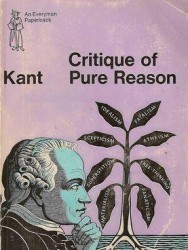
Critique of Pure Reason Critique of Pure Reason is one of the cornerstones in western philosophy. It was first published in 1781 and it was later followed by the works: Critique of Judgement and the Critique of Judgement. In Critique of Pure Reason, Kant outline his theories about space and time as a form of perceiving and causality as a form of knowing. Both space and time and our conceptual principles and processes pre-structure our experience. Download the 890 pages PDF e-book here (huge file: 28 MB):

Critique of Pure Reason by Immanuel Kant
Introduction to Kant's Critique of Pure Reason
Who was Immanuel Kant?
Immanuel Kant was an influential German philosopher in the Age of Enlightenment, primarily known for his contributions to the fields of metaphysics, epistemology, ethics, and aesthetics. Born in Königsberg, now occupied by Russia, on April 22, 1724, Kant spent most of his life in his hometown. Kant's philosophical work is epitomized by his "Critique" series, which includes three major works: the "Critique of Pure Reason" (1781), the "Critique of Practical Reason" (1788), and the "Critique of Judgment" (1790). These works address, respectively, the foundations and limits of human knowledge, the philosophy of moral and ethical reasoning, and the critique of aesthetics and teleology. One of his most significant contributions to philosophy is the concept of the "categorical imperative," a principle that asserts that one should act only according to that maxim by which you can at the same time will that it should become a universal law. This idea is a cornerstone of modern deontological ethics and asserts that morality is derived from rationality and the inherent dignity of human beings. Kant's influence extends beyond philosophy into other fields such as science, politics, and psychology, shaping modern thought with his rigorous approach to systematic philosophy. He passed away on February 12, 1804, but his ideas continue to resonate and influence various academic disciplines. Read the full article
3 notes
·
View notes
Text
Holidays 4.28
Holidays
Astronomy Day
Biological Clock Day
Bulldogs Are Beautiful Day
Chicken Tickling Day
Clean Comedy Day
Cubicle Day
Day for Safety and Health at Work (Poland)
Day of Dialogue
Days of Remembrance of Victims of the Holocaust, Day 1 (US)
Eat Your Friends Day
Ed Balls Day (UK)
Flag Day (Åland Islands)
Flat White Day
Food Pyramid Day
428 Day
Global Pay It Forward Day
Gone-ta-Pott Day [every 28th]
Great Poetry Reading Day
Hyacinth Day (French Republic)
International Astronomy Day
International Automation Professionals Day
International Consanguinamory Day
International Girls in Information and Telecommunication Technologies Day
Jester’s Day (Elder Scrolls)
Kenneth Kaunda Day (Zambia)
Kiss Your Mate Day
Lawyers’ Day (India)
Mujahideen Victory Day (Afghanistan)
Mutiny On the Bounty Day
National Anger Day (UK)
National BSL Day (UK)
National Brave Hearts Day
National Cubicle Day
National Day of Mourning (Canada)
National Franklin Day
National Great Poetry Reading Day
National Headshot Day
National Heroes’ Day (Barbados)
National Kiss Your Mate Day
National Poetry and Literature Day (Indonesia)
National “Say Hi to Joe” Day
National Suck Breast Day
National Superhero Day
National Teach Children to Save Day
National Willy Fog Day (UK)
National Workplace Wellbeing Day (Ireland)
Occupational Safety & Health Day
Pastele Blajinilor (Memory or Parent's Day; Moldova)
Restoration of Sovereignty Day (Japan)
Rip Cord Day
Saint Pierre-Chanel Day (Wallis and Futuna)
Santa Fe Trail Day
Sardinia Day (Italy)
Small Car Day
Steel Safety Day
Texas Wildflower Day
Turkmen Racing Horse Festival (Turkmenistan)
Victory Day (Afghanistan)
Workers’ Memorial Day (Gibraltar)
World Art Deco Day
World Day for Safety and Health at Work (UN)
Food & Drink Celebrations
National Blueberry Pie Day
4th & Last Sunday in April
Blue Sunday [Last Sunday]
Brasseries Portes Ouvertes (Open Breweries' Day; Belgium) [Last Sunday]
Dictionary Day [Sunday of Nat’l Library Week]
Divine Mercy Sunday [Last Sunday]
Drive It Day (UK) [4th Sunday]
Family Reading Week begins [Sunday before 1st Saturday in May]
International Search and Rescue Dog Day [Last Sunday]
International Twin Cities Day [Last Sunday]
Landsgemeinde (Switzerland) [Last Sunday]
Mother, Father Deaf Day [Last Sunday]
Music Minister Appreciation Day [Last Sunday]
National Blue Sunday and Day of Prayer for Abused Children [Last Sunday]
National Pet Parents Day [Last Sunday]
Pinhole Photography Day [Last Sunday]
Sunday of the Paralytic [Last Sunday]
Turkmen Racing Horse Festival (Turkmenistan) [Last Sunday]
World Day of Marriage [Last Sunday]
World Nyckelharpa Day [Last Sunday]
Worldwide Pinhole Photography Day [Last Sunday]
Weekly Holidays beginning April 28 (Last Week)
Go Diaper Free Week (thru 5.4) [From Last Sunday]
National Auctioneers Week (thru 5.4)
National Small Business Week (thru 5.4) [1st Week of May]
Preservation Week (thru 5.4)
Stewardship Week (thru 5.5) [Last Sunday to 1st Sunday]
Independence & Related Days
Maryland Statehood Day (#7; 1788)
Restoration of Sovereignty Day (Japan)
Festivals Beginning April 28, 2024
Blessing of the Fleet & Seafood Festival (Mount Pleasant, South Carolina)
The Good Food Awards (Portland, Oregon)
Heritage Fire (Atlanta, Georgia)
St. Thomas Carnival (Charlotte Amalie, U.S. Virgin Islands) [thru 5.5]
Sweet Corn Fiesta (West Palm Beach, Florida)
Taste of St. Augustine (St. Augustine, Florida)
Turkmen Racing Horse Festival (Turkmenistan) [Last Sunday]
Feast Days
Aphrodisius and companions (Christian; Saint)
Blueberry Pie Day (Pastafarian)
Chicken Tickling Day (Leprechauns; Shamanism)
Cronan of Roscrea, Ireland (Christian; Saint)
Cyril of Turov (Christian; Saint)
Didymus and Theodore (Christian; Martyrs)
Elmo’s Jacket (Muppetism)
Feast of Jamál (Beauty; Baha'i)
Floralia (Old Roman Goddess of Flowers)
Gianna Beretta Molla (Christian; Saint)
Harper Lee (Writerism)
José Malhoa (Artology)
Kirill of Turov (Orthodox, added to Roman Martyrology in 1969)
L’Africaine (The African Woman), by Giacomo Meyerbeer (Opera; 1865)
Louis Mary de Montfort (Christian; Saint)
Palmer Day (Church of the SubGenius; Saint)
Pamphilus of Sulmona (Christian; Saint)
Patricius, Bishop of Pruse, in Bithynia (Christian; Saint)
Paul of the Cross (Christian; Saint)
Peter Chanel (Christian; Martyr)
Phocion (Positivist; Saint)
Pollio and others (Christian; Martyrs in Pannonia)
Terry Pratchett (Writerism)
Theodora and Didymus (Christian; Martyrs)
Vitalis and Valeria of Milan (Christian; Saint)
Walpurgisnacht, Day VI (Pagan)
Yom HaShoah (began last night; Judaism)
Yves Klein (Artology)
Orthodox Christian Liturgical Calendar Holidays
Palm Sunday
Lucky & Unlucky Days
Butsumetsu (仏滅 Japan) [Unlucky all day.]
Fortunate Day (Pagan) [17 of 53]
Umu Limnu (Evil Day; Babylonian Calendar; 20 of 60)
Premieres
Akeelah and the Beer (Film; 2006)
The Art of Excellence, by Tony Bennett (Album; 1987) [1st CD-only Release]
Bananas (Film; 1971)
Before These Crowded Street, by Crowded House (Album; 1998)
The Birth of Britain, by Winston Churchill (History Book; 1956)
Bridesmaids (Film; 2011)
Buck and the Preacher (Film; 1972)
Casino Royale (Film; 1967) [James Bond non-series film]
Chicago Transit Authority, by Chicago (Album; 1969)
The Death of the Heart, by Elizabeth Bowen (Novel; 1938)
FM (Film; 1978)
Frequency (Film; 2000)
Hair (Broadway Musical; 1968)
Hard Candy (Film; 2006)
The Hitchhiker’s Guide to the Galaxy (Film; 2005)
The Hockey Champ (Disney Cartoon; 1939)
A Hound for Trouble (WB MM Cartoon; 1951)
How to Be a Latin Lover (Film; 2017)
I Kissed a Girl, by Katy Perry (Song; 2008)
I’m the One, by DJ Khaled (Album; 2017)
Iron Man 2 (Film; 2010)
Kiss Me Deadly (Film; 1955)
Leave Well Enough Alone (Fleischer Popeye Cartoon; 1939)
Love Me, Love My Mouse (Tom & Jerry Cartoon; 1966)
Loverboy (Film; 1989)
Mighty Mouse Meets Jekyll and Hyde Cat (Terrytoons Cartoon; 1944)
Mud Squad (Tijuana Toads Cartoon; 1971)s
Night (Disney Cartoon; 1930)
Odd Ant Out (Ant and the Aardvark Cartoon; 1970)
A Painted House, by John Grisham (Novel; 2001)
Passport to Pimlico (Film; 1949)
Pennsylvania 6-5000, recorded by Glenn Miller (Song; 1940)
Polite Society (Film; 2023)
The Power of Positive Thinking, by Norman Vincent Peale (Book; 1954)
The Prison Panic (Oswald the Lucky Rabbit Cartoon; 1930)
Problem, by Ariana Grande (Song; 2014)
Robinson Crusoe (WB LT Cartoon; 1956)
The Secret of the Old Clock, by Carolyn Keene (Mystery Novel; 1930) [1st Nancy Drew]
*61 (Film; 2001)
Slave to Love, by Bryan Ferry (Song; 1985)
Smoked Hams (Woody Woodpecker Cartoon; 1947)
Starman, by David Bowie (Song; 1972)
Stick It (Film; 2006)
Suddenly It’s Spring (Noveltoons Cartoon; 1944)
Suffragette City, by David Bowie (Song; 1972)
Trailer Horn (Disney Cartoon; 1950)
Viva Las Vegas, by Elvis Presley (Song; 1964)
Today’s Name Days
Hugo, Ludwig, Pierre (Austria)
Dada, Ljudevit, Petar (Croatia)
Vlastislav (Czech Republic)
Vitalis (Denmark)
Lagle, Luige (Estonia)
Ilpo, Ilppo, Tuure (Finland)
Valérie (France)
Hugo, Ludwig, Pierre (Germany)
Valéria (Hungary)
Manilio, Pietro, Valeria (Italy)
Gundega, Gunta, Terēze (Latvia)
Rimgailė, Valerija, Vitalius, Vygantas (Lithuania)
Vivi, Vivian (Norway)
Arystarch, Maria, Paweł, Przybyczest, Waleria, Witalis (Poland)
Iason, Sosipatru (Romania)
Tamara (Russia)
Jarmila (Slovakia)
Luis, Pedro, Prudencio (Spain)
Ture, Tyra (Sweden)
Valeria, Valerian, Valerie, Valery (USA)
Today is Also…
Day of Year: Day 119 of 2024; 247 days remaining in the year
ISO: Day 7 of week 17 of 2024
Celtic Tree Calendar: Saille (Willow) [Day 15 of 28]
Chinese: Month 3 (Wu-Chen), Day 20 (Ren-Xu)
Chinese Year of the: Dragon 4722 (until January 29, 2025) [Wu-Chen]
Hebrew: 20 Nisan 5784
Islamic: 19 Shawwal 1445
J Cal: 29 Cyan; Eightday [29 of 30]
Julian: 15 April 2024
Moon: 79%: Waning Gibbous
Positivist: 7 Caesar (5th Month) [Themistocles]
Runic Half Month: Lagu (Flowing Water) [Day 4 of 15]
Season: Spring (Day 41 of 92)
Week: 4th Week of April / 1st Week of May
Zodiac: Taurus (Day 9 of 31)
2 notes
·
View notes
Text
Maryland is a Mid-Atlantic state that's defined by its abundant waterways and coastlines on the Chesapeake Bay and Atlantic Ocean. Its largest city, Baltimore, has a long history as a major seaport. Fort McHenry, birthplace of the U.S. national anthem, sits at the mouth of Baltimore’s Inner Harbor, home to the National Aquarium and Maryland Science Center. ― Google
Capital: Annapolis
Abbreviation: MD
Population: 6.165 million (2022)
Senators: Ben Cardin (Democratic Party), Chris Van Hollen (Democratic Party)
Admitted to the Union: April 28, 1788 (7th)
Before statehood: Province of Maryland
Elevation: 350 ft (110 m)
2 notes
·
View notes
Text
Holidays 4.28
Holidays
Astronomy Day
Biological Clock Day
Clean Comedy Day
Cubicle Day
Day for Safety and Health at Work (Poland)
Day of Dialogue
Days of Remembrance of Victims of the Holocaust, Day 1 (US)
Eat Your Friends Day
Ed Balls Day (UK)
Flat White Day
Food Pyramid Day
428 Day
Global Pay It Forward Day
Gone-ta-Pott Day [every 28th]
Great Poetry Reading Day
International Astronomy Day
International Automation Professionals Day
International Consanguinamory Day
International Girls in Information and Telecommunication Technologies Day
Jester’s Day (Elder Scrolls)
Kenneth Kaunda Day (Zambia)
KIF1A Day
Kiss Your Mate Day
Lawyers’ Day (India)
Mujahideen Victory Day (Afghanistan)
Mutiny On the Bounty Day
National Anger Day (UK)
National BSL Day (UK)
National Brave Hearts Day
National Cubicle Day
National Day of Mourning (Canada)
National Great Poetry Reading Day
National Headshot Day
National Heroes’ Day (Barbados)
National Kiss Your Mate Day
National Poetry and Literature Day (Indonesia)
National “Say Hi to Joe” Day
National Superhero Day
National Teach Children to Save Day
National Willy Fog Day (UK)
National Workplace Wellbeing Day (Ireland)
Occupational Safety & Health Day
Pastele Blajinilor (Memory or Parent's Day; Moldova)
Radunitsa (Ancestors Veneration Day; Belarus)
Restoration of Sovereignty Day (Japan)
Rip Cord Day
Saint Pierre-Chanel Day (Wallis and Futuna)
Santa Fe Trail Day
Sardinia Day (Italy)
Showa Day (Japan)
Small Car Day
Steel Safety Day
Turkmen Racing Horse Festival (Turkmenistan)
Victory Day (Afghanistan)
Workers’ Memorial Day (Gibraltar)
World Art Deco Day
World Day for Safety and Health at Work (UN)
Food & Drink Celebrations
National Blueberry Pie Day
Nature Celebrations
Bulldogs Are Beautiful Day
Chicken Tickling Day
Cuckoo-Pint Day (Arum maculation)
Hyacinth Day (French Republic)
Red Primrose Day (Unparalleled Beauty; Korean Birth Flowers)
Texas Wildflower Day
Independence, Flag & Related Days
Flag Day (Åland Islands)
Maryland Statehood Day (#7; 1788)
Praia City Day (Cape Verde)
Restoration of Sovereignty Day (Japan)
4th & Last Monday in April
Confederate Memorial Day (AL, FL, GA) [4th Monday]
Confederate Memorial Day (Mississippi) [Last Monday]
Meatless Monday [Last Monday of Each Month]
Meditation Monday [Every Monday]
Monday Musings [Every Monday]
Moody Monday [Last Monday of Each Month]
Motivation Monday [Every Monday]
Public Library Day [Monday of Library Week]
School Librarian Day [Monday of Library Week]
Weekly Holidays beginning April 28 (Last Week of April)
National Youth Violence Prevention Week (thru 5.2.)
Festivals On or Beginning April 28, 2025
AfrikaBurn (Tankwa, South Africa) [thru 5.4]
Craft Brewers Conference & BrewExpo America (Indianapolis, Indiana) [thru 5.1]
Taste of Vernon (Vernon, New Jersey)
Feast Days
Aphrodisius and companions (Christian; Saint)
Blueberry Pie Day (Pastafarian)
Chicken Tickling Day (Leprechauns; Shamanism)
Cronan of Roscrea, Ireland (Christian; Saint)
Cyril of Turov (Christian; Saint)
Didymus and Theodore (Christian; Martyrs)
Elmo’s Jacket (Muppetism)
Feast of Jamál (Beauty; Baha'i)
Floralia (Old Roman Goddess of Flowers)
Gianna Beretta Molla (Christian; Saint)
Kirill of Turov (Orthodox, added to Roman Martyrology in 1969)
L’Africaine (The African Woman), by Giacomo Meyerbeer (Opera; 1865)
Louis Mary de Montfort (Christian; Saint)
Palmer Day (Church of the SubGenius; Saint)
Pamphilus of Sulmona (Christian; Saint)
Patricius, Bishop of Pruse, in Bithynia (Christian; Saint)
Paul of the Cross (Christian; Saint)
Peter Chanel (Christian; Martyr)
Phocion (Positivist; Saint)
Pollio and others (Christian; Martyrs in Pannonia)
Theodora and Didymus (Christian; Martyrs)
Vitalis and Valeria of Milan (Christian; Saint)
Walpurgisnacht, Day VI (Pagan)
Christian Liturgical Holidays
2nd Monday after Easter (a.k.a. …
Hocktide (Hungerford, UK; medieval England)
Tutti Day (Berkshire, England)
Lunar Calendar Holidays
Chinese: Month 4 (Xin-Si), Day 1 (Ding-Mao)
Day Pillar: Fire Rabbit
12-Day Officers/12 Gods: Close Day (閉 Bi) [Inauspicious]]
Holidays: None Known
Secular Saints Days
Ann-Margaret (Entertainment)
Dick Ayers (Art)
James Bama (Art)
Lionel Barrymore (Entertainment)
Charles Cotton (Literature)
Penelope Cruz (Entertainment)
Kurt Gödel (Mathematics)
Steve Khan (Music)
Yves Klein (Art)
Harper Lee (Literature)
Jay Leno (Entertainment)
José Malhoa (Art)
Mary McDonnell (Entertainment)
Jan Oort (Science)
Terry Pratchett (Literature)
Ian Rankin (Literature)
Karl Berry Sharpless (Science)
Alice Waters (Food)
Lucky & Unlucky Days
Butsumetsu (仏滅 Japan) [Unlucky all day.]
Fortunate Day (Pagan) [17 of 53]
Umu Limnu (Evil Day; Babylonian Calendar; 20 of 60)
Premieres
Akeelah and the Beer (Film; 2006)
The Art of Excellence, by Tony Bennett (Album; 1987) [1st CD-only Release]
Bananas (Film; 1971)
A Barnyard Nightmare (Powers Cartoon; 1917)
The Beauty Shop (Dinky Duck Terrytoons Cartoon; 1950)
Before These Crowded Street, by Crowded House (Album; 1998)
The Birth of Britain, by Winston Churchill (History Book; 1956)
Bridesmaids (Film; 2011)
Bubble and Troubles (Aesop’s Sound Fable Cartoon; 1933)
Buck and the Preacher (Film; 1972)
Casino Royale (Film; 1967) [James Bond non-series film]
Chicago Transit Authority, by Chicago (Album; 1969)
Dance the Night Away, by Van Halen (Song; 1979)
The Death of the Heart, by Elizabeth Bowen (Novel; 1938)
Dinky in the Beauty Shop (Dinky Duck Cartoon; 1950)
The Dream Kids (Fox & Crow Cartoon; 1940)
The Flamboyant Arms (Clint Clobber Cartoon; 1959)
FM (Film; 1978)
Frequency (Film; 2000)
The Great Offensive (Hearst-Pathe News Cartoon; 1917)
Hair (Broadway Musical; 1968)
Hard Candy (Film; 2006)
A Hatful of Dreams (George Pal Puppetoon Cartoon; 1945)
Helping McAdoo (Mutt & Jeff Cartoon; 1918)
The Hitchhiker’s Guide to the Galaxy (Film; 2005)
The Hockey Champ (Donald Duck Disney Cartoon; 1939)
Hook and Ladder Hokum (Tom & Jerry Van Beuren Cartoon; 1933)
A Hound for Trouble (WB MM Cartoon; 1951)
How to Be a Latin Lover (Film; 2017)
I Kissed a Girl, by Katy Perry (Song; 2008)
I’m the One, by DJ Khaled (Album; 2017)
Iron Man 2 (Film; 2010)
I Want You To Want Me, by Cheap Trick (Song; 1979)
Kiss Me Deadly (Film; 1955)
Ko-Ko’s Haunted House (Fleischer Inkwell Imps Cartoon; 1928)
Leave Well Enough Alone (Fleischer Popeye Cartoon; 1939)
Love Me, Love My Mouse (Tom & Jerry Cartoon; 1966)
Loverboy (Film; 1989)
The Mail Pilot (Mickey Mouse Disney Cartoon; 1933)
Mighty Mouse Meets Jekyll and Hyde Cat (Terrytoons Cartoon; 1944)
Minnesota Pioneer (Newspaper; 18490
Mud Squad (Tijuana Toads Cartoon; 1971)s
Night (Disney Cartoon; 1930)
Odd Ant Out (Ant and the Aardvark Cartoon; 1970)
A Painted House, by John Grisham (Novel; 2001)
Passport to Pimlico (Film; 1949)
The Peanut Vendor (Fleischer Screen Songs Cartoon; 1933)
Pennsylvania 6-5000, recorded by Glenn Miller (Song; 1940)
The Pet Shop (Scrappy Cartoon; 1932)
Polite Society (Film; 2023)
The Power of Positive Thinking, by Norman Vincent Peale (Book; 1954)
The Prison Panic (Oswald the Lucky Rabbit Cartoon; 1930)
Problem, by Ariana Grande (Song; 2014)
Rabbitson Crusoe (WB LT Cartoon; 1956)
Scrub Me Mama with a Boogie Beat (Walter Lantz Cartoon; 1941)
The Secret of the Old Clock, by Carolyn Keene (Mystery Novel; 1930) [1st Nancy Drew]
*61 (Film; 2001)
Slave to Love, by Bryan Ferry (Song; 1985)
Smoked Hams (Woody Woodpecker Cartoon; 1947)
Starman, by David Bowie (Song; 1972)
Stick It (Film; 2006)
Such Is Life in Algeria (Powers Cartoon; 1917)
Suddenly It’s Spring (Noveltoons Cartoon; 1944)
Suffragette City, by David Bowie (Song; 1972)
Trailer Horn (Disney Cartoon; 1950)
Viva Las Vegas, by Elvis Presley (Song; 1964)
Win, Place and Showboat (Screen Songs Cartoon; 1950)
A Worm’s Eye View (Scrappy Cartoon; 1939)
Today’s Name Days
Hugo, Ludwig, Pierre (Austria)
Dada, Ljudevit, Petar (Croatia)
Vlastislav (Czech Republic)
Vitalis (Denmark)
Lagle, Luige (Estonia)
Ilpo, Ilppo, Tuure (Finland)
Valérie (France)
Hugo, Ludwig, Pierre (Germany)
Valéria (Hungary)
Manilio, Pietro, Valeria (Italy)
Gundega, Gunta, Terēze (Latvia)
Rimgailė, Valerija, Vitalius, Vygantas (Lithuania)
Vivi, Vivian (Norway)
Arystarch, Maria, Paweł, Przybyczest, Waleria, Witalis (Poland)
Iason, Sosipatru (Romania)
Tamara (Russia)
Jarmila (Slovakia)
Luis, Pedro, Prudencio (Spain)
Ture, Tyra (Sweden)
Valeria, Valerian, Valerie, Valery (USA)
Today’s National Name Days
National Franklin Day
Today is Also…
Day of Year: Day 118 of 2025; 247 days remaining in the year
ISO Week: Day 1 of Week 18 of 2025
Celtic Tree Calendar: Saille (Willow) [Day 14 of 28]
Chinese: Month 4 (Xin-Si), Day 1 (Ding-Mao)
Chinese Year of the: Snake 4723 (until February 17, 2026) [Ding-Chou]
Coptic: 20 Barmundah 1741
Druid Tree Calendar: Walnut (April 21-30) [Day 8 of 10]
Hebrew: 30 Nisan 5785
Islamic: 29 Shawwal 1446
Julian: 15 April 2025
Moon: 2%: Waxing Crescent
Positivist: 6 Caesar (5th Month) [Phocion]
Runic Half Month: Man (Humanity) [Day 15 of 15] (thru 4.28)
Season: Spring (Day 39 of 92)
SUn Calendar: 28 Cyan; Seventhday [28 of 30]
Week: Last Week of April
Zodiac:
Tropical (Typical) Zodiac: Taurus (Day 9 of 31)
Sidereal Zodiac: Aries (Day 15 of 31)
Schmidt Zodiac: Aries (Day 13 of 31)
IAU Boundaries (Current) Zodiac: Aries (Day 10 of 25)
IAU Boundaries (1977) Zodiac: Aries (Day 10 of 25)
Calendar Changes
梅月 [Méiyuè] (Chinese Lunisolar Calendar) [Month 4 of 12] (Plum Month) [Earthly Branch: Snake Month] (Sìyuè; Fourth Month)
0 notes
Text

Louise Isabelle Alexandrine Augusta, Countess of Sayn-Hachenburg, Burgravine of Kirchberg (19 April 1772, Hachenburg – 6 January 1827, Vienna, Austrian Empire) was the Princess consort of Nassau-Weilburg (28 November 1788 – 9 January 1816) through her marriage to Frederick William, Prince of Nassau-Weilburg.
#Louise Isabella of Kirchberg#House Burggrafen von Kirchberg#xviii century#xix century#women in history#people#portrait#paintings#art#arte
1 note
·
View note
Text
Maryland, My Maryland - Today In Southern History
28 April 1788 On this date in 1788… Maryland ratified the U.S. Constitution and became the 7th U.S. state. Other Years: 1635 – Virginia colony Governor John Harvey was accused of treason and removed from office. 1862 – Forts Jackson and St. Phillip on the Mississippi river surrendered to federal troops. 1871 – In response to raids near Tucson, William Oury embarked, leading 140 armed white…

View On WordPress
0 notes
Text











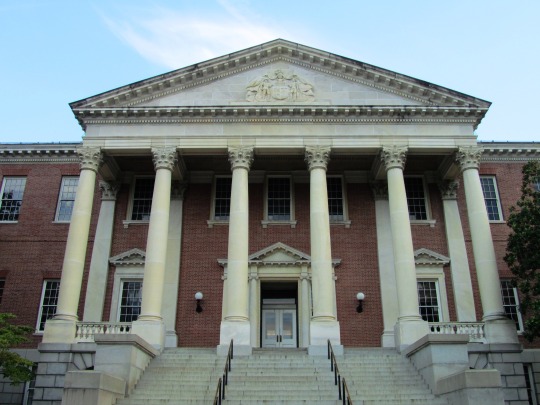

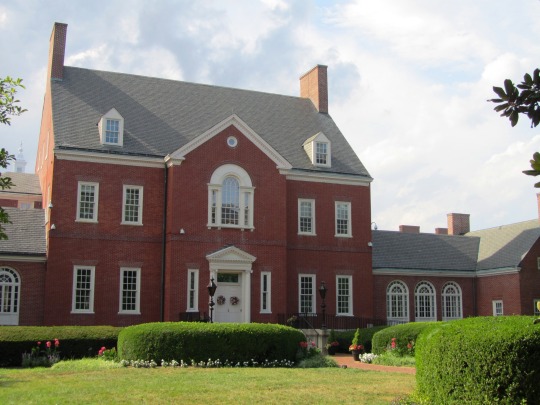



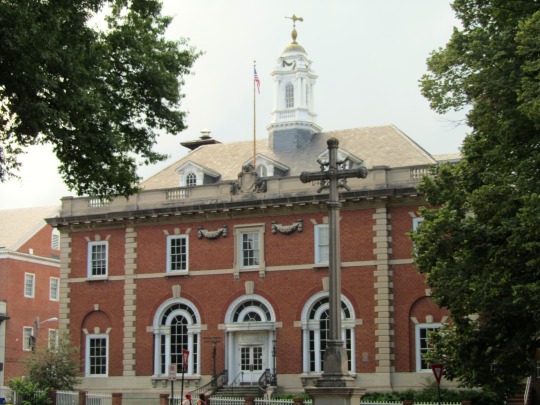








Maryland became the seventh state to ratify the United States Constitution on April 28, 1788.
#Maryland#7th US State#ratified#US Constitution#28 April 1788#US history#235th anniversary#Annapolis#summer 2013#original photography#travel#vacation#architecture#tourist attraction#landmark#cityscape#Maryland State House#government house#USA#Mid-Atlantic Region#church#street scene#exterior
1 note
·
View note
Text
youtube
Lord Jacob Rothschild Confronted
May 31, 2012
Context
"Rothschild family, the most famous of all European banking dynasties, which for some 200 years exerted great influence on the economic and, indirectly, the political history of Europe. The house was founded by Mayer Amschel Rothschild (b. February 23, 1744, Frankfurt am Main—d. September 19, 1812, Frankfurt) and his five sons, Amschel Mayer (b. June 12, 1773, Frankfurt—d. December 6, 1855, Frankfurt), Salomon Mayer (b. September 9, 1774—d. July 27, 1855, Vienna), Nathan Mayer (b. September 16, 1777—d. July 28, 1836, Frankfurt), Karl Mayer (b. April 24, 1788—d. March 10, 1855, Naples), and Jakob, or James, Mayer (b. May 15, 1792—d. November 15, 1868, Paris)." - Britannica
from WeAreChange
0 notes
Photo

Great price on this 2000-S Maryland Proof State Quarter ONLY: $2.50 Released on March 13, 2000, this is the seventh coin released in the 50 State Quarters Program and the second released in 2000. Maryland, admitted into the Union on April 28, 1788, themed the coin, The Old Line State. It highlights the Maryland Statehouse and is surrounded by White Oak leaf clusters. President William J. Clinton was in office when this legislation was signed. Three United States Mint Directors served under President Clinton's tenure; David J. Ryder of Idaho, Philip N. Diehl of Texas, and Jay W. Johnson of Wisconsin. https://www.thecoinshop.shop/state-commemorative-quarters/2000-s-maryland-proof-state-quarter View MORE State Commemorative Quarters https://www.thecoinshop.shop/state-commemorative-quarters StatehoodQuarters StateQuarterProgram statequarters
0 notes
Text
The napoleonic marshal‘s children
After seeing @josefavomjaaga’s and @northernmariette’s marshal calendar, I wanted to do a similar thing for all the marshal’s children! So I did! I hope you like it. c: I listed them in more or less chronological order but categorised them in years (especially because we don‘t know all their birthdays). At the end of this post you are going to find remarks about some of the marshals because not every child is listed! ^^“ To the question about the sources: I mostly googled it and searched their dates in Wikipedia, ahaha. Nevertheless, I also found this website. However, I would be careful with it. We are talking about history and different sources can have different dates. I am always open for corrections. Just correct me in the comments if you find or know a trustful source which would show that one or some of the dates are incorrect. At the end of the day it is harmless fun and research. :) Pre 1790
François Étienne Kellermann (4 August 1770- 2 June 1835)
Marguerite Cécile Kellermann (15 March 1773 - 12 August 1850)
Ernestine Grouchy (1787–1866)
Mélanie Marie Josèphe de Pérignon (1788 - 1858)
Alphonse Grouchy (1789–1864)
Jean-Baptiste Sophie Pierre de Pérignon (1789- 14 January 1807)
Marie Françoise Germaine de Pérignon (1789 - 15 May 1844)
Angélique Catherine Jourdan (1789 or 1791 - 7 March 1879)
1790 - 1791
Marie-Louise Oudinot (1790–1832)
Marie-Anne Masséna (8 July 1790 - 1794)
Charles Oudinot (1791 - 1863)
Aimee-Clementine Grouchy (1791–1826)
Anne-Francoise Moncey (1791–1842)
1792 - 1793
Bon-Louis Moncey (1792–1817)
Victorine Perrin (1792–1822)
Anne-Charlotte Macdonald (1792–1870)
François Henri de Pérignon (23 February 1793 - 19 October 1841)
Jacques Prosper Masséna (25 June 1793 - 13 May 1821)
1794 - 1795
Victoire Thècle Masséna (28 September 1794 - 18 March 1857)
Adele-Elisabeth Macdonald (1794–1822)
Marguerite-Félécité Desprez (1795-1854); adopted by Sérurier
Nicolette Oudinot (1795–1865)
Charles Perrin (1795–15 March 1827)
1796 - 1997
Emilie Oudinot (1796–1805)
Victor Grouchy (1796–1864)
Napoleon-Victor Perrin (24 October 1796 - 2 December 1853)
Jeanne Madeleine Delphine Jourdan (1797-1839)
1799
François Victor Masséna (2 April 1799 - 16 April 1863)
Joseph François Oscar Bernadotte (4 July 1799 – 8 July 1859)
Auguste Oudinot (1799–1835)
Caroline de Pérignon (1799-1819)
Eugene Perrin (1799–1852)
1800
Nina Jourdan (1800-1833)
Caroline Mortier de Trevise (1800–1842)
1801
Achille Charles Louis Napoléon Murat (21 January 1801 - 15 April 1847)
Louis Napoléon Lannes (30 July 1801 – 19 July 1874)
Elise Oudinot (1801–1882)
1802
Marie Letizia Joséphine Annonciade Murat (26 April 1802 - 12 March 1859)
Alfred-Jean Lannes (11 July 1802 – 20 June 1861)
Napoléon Bessière (2 August 1802 - 21 July 1856)
Paul Davout (1802–1803)
Napoléon Soult (1802–1857)
1803
Marie-Agnès Irma de Pérignon (5 April 1803 - 16 December 1849)
Joseph Napoléon Ney (8 May 1803 – 25 July 1857)
Lucien Charles Joseph Napoléon Murat (16 May 1803 - 10 April 1878)
Jean-Ernest Lannes (20 July 1803 – 24 November 1882)
Alexandrine-Aimee Macdonald (1803–1869)
Sophie Malvina Joséphine Mortier de Trévise ( 1803 - ???)
1804
Napoléon Mortier de Trévise (6 August 1804 - 29 December 1869)
Michel Louis Félix Ney (24 August 1804 – 14 July 1854)
Gustave-Olivier Lannes (4 December 1804 – 25 August 1875)
Joséphine Davout (1804–1805)
Hortense Soult (1804–1862)
Octavie de Pérignon (1804-1847)
1805
Louise Julie Caroline Murat (21 March 1805 - 1 December 1889)
Antoinette Joséphine Davout (1805 – 19 August 1821)
Stephanie-Josephine Perrin (1805–1832)
1806
Josephine-Louise Lannes (4 March 1806 – 8 November 1889)
Eugène Michel Ney (12 July 1806 – 25 October 1845)
Edouard Moriter de Trévise (1806–1815)
Léopold de Pérignon (1806-1862)
1807
Adèle Napoleone Davout (June 1807 – 21 January 1885)
Jeanne-Francoise Moncey (1807–1853)
1808: Stephanie Oudinot (1808-1893) 1809: Napoleon Davout (1809–1810)
1810: Napoleon Alexander Berthier (11 September 1810 – 10 February 1887)
1811
Napoleon Louis Davout (6 January 1811 - 13 June 1853)
Louise-Honorine Suchet (1811 – 1885)
Louise Mortier de Trévise (1811–1831)
1812
Edgar Napoléon Henry Ney (12 April 1812 – 4 October 1882)
Caroline-Joséphine Berthier (22 August 1812 – 1905)
Jules Davout (December 1812 - 1813)
1813: Louis-Napoleon Suchet (23 May 1813- 22 July 1867/77)
1814: Eve-Stéphanie Mortier de Trévise (1814–1831) 1815
Marie Anne Berthier (February 1815 - 23 July 1878)
Adelaide Louise Davout (8 July 1815 – 6 October 1892)
Laurent François or Laurent-Camille Saint-Cyr (I found two almost similar names with the same date so) (30 December 1815 – 30 January 1904)
1816: Louise Marie Oudinot (1816 - 1909)
1817
Caroline Oudinot (1817–1896)
Caroline Soult (1817–1817)
1819: Charles-Joseph Oudinot (1819–1858)
1820: Anne-Marie Suchet (1820 - 27 May 1835) 1822: Henri Oudinot ( 3 February 1822 – 29 July 1891) 1824: Louis Marie Macdonald (11 November 1824 - 6 April 1881.) 1830: Noemie Grouchy (1830–1843) —————— Children without clear birthdays:
Camille Jourdan (died in 1842)
Sophie Jourdan (died in 1820)
Additional remarks: - Marshal Berthier died 8.5 months before his last daughter‘s birth. - Marshal Oudinot had 11 children and the age difference between his first and last child is around 32 years. - The age difference between marshal Grouchy‘s first and last child is around 43 years. - Marshal Lefebvre had fourteen children (12 sons, 2 daughters) but I couldn‘t find anything kind of reliable about them so they are not listed above. I am aware that two sons of him were listed in the link above. Nevertheless, I was uncertain to name them in my list because I thought that his last living son died in the Russian campaign while the website writes about the possibility of another son dying in 1817. - Marshal Augerau had no children. - Marshal Brune had apparently adopted two daughters whose names are unknown. - Marshal Pérignon: I couldn‘t find anything about his daughters, Justine, Elisabeth and Adèle, except that they died in infancy. - Marshal Sérurier had no biological children but adopted Marguerite-Félécité Desprez in 1814. - Marshal Marmont had no children. - I found out that marshal Saint-Cyr married his first cousin, lol. - I didn‘t find anything about marshal Poniatowski having children. Apparently, he wasn‘t married either (thank you, @northernmariette for the correction of this fact! c:)
#Marshal‘s children calendar#literally every napoleonic marshal ahaha#napoleonic era#Napoleonic children#I am not putting all the children‘s names into the tags#Thank you no thank you! :)#YES I posted it without double checking every child so don‘t be surprised when I have to correct some stuff 😭#napoleon's marshals#napoleonic
81 notes
·
View notes
Text
Holidays 4.28
Holidays
Astronomy Day
Biological Clock Day
Clean Comedy Day
Cubicle Day
Day for Safety and Health at Work (Poland)
Day of Dialogue
Days of Remembrance of Victims of the Holocaust, Day 1 (US)
Eat Your Friends Day
Ed Balls Day (UK)
Flat White Day
Food Pyramid Day
428 Day
Global Pay It Forward Day
Gone-ta-Pott Day [every 28th]
Great Poetry Reading Day
International Astronomy Day
International Automation Professionals Day
International Consanguinamory Day
International Girls in Information and Telecommunication Technologies Day
Jester’s Day (Elder Scrolls)
Kenneth Kaunda Day (Zambia)
KIF1A Day
Kiss Your Mate Day
Lawyers’ Day (India)
Mujahideen Victory Day (Afghanistan)
Mutiny On the Bounty Day
National Anger Day (UK)
National BSL Day (UK)
National Brave Hearts Day
National Cubicle Day
National Day of Mourning (Canada)
National Great Poetry Reading Day
National Headshot Day
National Heroes’ Day (Barbados)
National Kiss Your Mate Day
National Poetry and Literature Day (Indonesia)
National “Say Hi to Joe” Day
National Superhero Day
National Teach Children to Save Day
National Willy Fog Day (UK)
National Workplace Wellbeing Day (Ireland)
Occupational Safety & Health Day
Pastele Blajinilor (Memory or Parent's Day; Moldova)
Radunitsa (Ancestors Veneration Day; Belarus)
Restoration of Sovereignty Day (Japan)
Rip Cord Day
Saint Pierre-Chanel Day (Wallis and Futuna)
Santa Fe Trail Day
Sardinia Day (Italy)
Showa Day (Japan)
Small Car Day
Steel Safety Day
Turkmen Racing Horse Festival (Turkmenistan)
Victory Day (Afghanistan)
Workers’ Memorial Day (Gibraltar)
World Art Deco Day
World Day for Safety and Health at Work (UN)
Food & Drink Celebrations
National Blueberry Pie Day
Nature Celebrations
Bulldogs Are Beautiful Day
Chicken Tickling Day
Cuckoo-Pint Day (Arum maculation)
Hyacinth Day (French Republic)
Red Primrose Day (Unparalleled Beauty; Korean Birth Flowers)
Texas Wildflower Day
Independence, Flag & Related Days
Flag Day (Åland Islands)
Maryland Statehood Day (#7; 1788)
Praia City Day (Cape Verde)
Restoration of Sovereignty Day (Japan)
4th & Last Monday in April
Confederate Memorial Day (AL, FL, GA) [4th Monday]
Confederate Memorial Day (Mississippi) [Last Monday]
Meatless Monday [Last Monday of Each Month]
Meditation Monday [Every Monday]
Monday Musings [Every Monday]
Moody Monday [Last Monday of Each Month]
Motivation Monday [Every Monday]
Public Library Day [Monday of Library Week]
School Librarian Day [Monday of Library Week]
Weekly Holidays beginning April 28 (Last Week of April)
National Youth Violence Prevention Week (thru 5.2.)
Festivals On or Beginning April 28, 2025
AfrikaBurn (Tankwa, South Africa) [thru 5.4]
Craft Brewers Conference & BrewExpo America (Indianapolis, Indiana) [thru 5.1]
Taste of Vernon (Vernon, New Jersey)
Feast Days
Aphrodisius and companions (Christian; Saint)
Blueberry Pie Day (Pastafarian)
Chicken Tickling Day (Leprechauns; Shamanism)
Cronan of Roscrea, Ireland (Christian; Saint)
Cyril of Turov (Christian; Saint)
Didymus and Theodore (Christian; Martyrs)
Elmo’s Jacket (Muppetism)
Feast of Jamál (Beauty; Baha'i)
Floralia (Old Roman Goddess of Flowers)
Gianna Beretta Molla (Christian; Saint)
Kirill of Turov (Orthodox, added to Roman Martyrology in 1969)
L’Africaine (The African Woman), by Giacomo Meyerbeer (Opera; 1865)
Louis Mary de Montfort (Christian; Saint)
Palmer Day (Church of the SubGenius; Saint)
Pamphilus of Sulmona (Christian; Saint)
Patricius, Bishop of Pruse, in Bithynia (Christian; Saint)
Paul of the Cross (Christian; Saint)
Peter Chanel (Christian; Martyr)
Phocion (Positivist; Saint)
Pollio and others (Christian; Martyrs in Pannonia)
Theodora and Didymus (Christian; Martyrs)
Vitalis and Valeria of Milan (Christian; Saint)
Walpurgisnacht, Day VI (Pagan)
Christian Liturgical Holidays
2nd Monday after Easter (a.k.a. …
Hocktide (Hungerford, UK; medieval England)
Tutti Day (Berkshire, England)
Lunar Calendar Holidays
Chinese: Month 4 (Xin-Si), Day 1 (Ding-Mao)
Day Pillar: Fire Rabbit
12-Day Officers/12 Gods: Close Day (閉 Bi) [Inauspicious]]
Holidays: None Known
Secular Saints Days
Ann-Margaret (Entertainment)
Dick Ayers (Art)
James Bama (Art)
Lionel Barrymore (Entertainment)
Charles Cotton (Literature)
Penelope Cruz (Entertainment)
Kurt Gödel (Mathematics)
Steve Khan (Music)
Yves Klein (Art)
Harper Lee (Literature)
Jay Leno (Entertainment)
José Malhoa (Art)
Mary McDonnell (Entertainment)
Jan Oort (Science)
Terry Pratchett (Literature)
Ian Rankin (Literature)
Karl Berry Sharpless (Science)
Alice Waters (Food)
Lucky & Unlucky Days
Butsumetsu (仏滅 Japan) [Unlucky all day.]
Fortunate Day (Pagan) [17 of 53]
Umu Limnu (Evil Day; Babylonian Calendar; 20 of 60)
Premieres
Akeelah and the Beer (Film; 2006)
The Art of Excellence, by Tony Bennett (Album; 1987) [1st CD-only Release]
Bananas (Film; 1971)
A Barnyard Nightmare (Powers Cartoon; 1917)
The Beauty Shop (Dinky Duck Terrytoons Cartoon; 1950)
Before These Crowded Street, by Crowded House (Album; 1998)
The Birth of Britain, by Winston Churchill (History Book; 1956)
Bridesmaids (Film; 2011)
Bubble and Troubles (Aesop’s Sound Fable Cartoon; 1933)
Buck and the Preacher (Film; 1972)
Casino Royale (Film; 1967) [James Bond non-series film]
Chicago Transit Authority, by Chicago (Album; 1969)
Dance the Night Away, by Van Halen (Song; 1979)
The Death of the Heart, by Elizabeth Bowen (Novel; 1938)
Dinky in the Beauty Shop (Dinky Duck Cartoon; 1950)
The Dream Kids (Fox & Crow Cartoon; 1940)
The Flamboyant Arms (Clint Clobber Cartoon; 1959)
FM (Film; 1978)
Frequency (Film; 2000)
The Great Offensive (Hearst-Pathe News Cartoon; 1917)
Hair (Broadway Musical; 1968)
Hard Candy (Film; 2006)
A Hatful of Dreams (George Pal Puppetoon Cartoon; 1945)
Helping McAdoo (Mutt & Jeff Cartoon; 1918)
The Hitchhiker’s Guide to the Galaxy (Film; 2005)
The Hockey Champ (Donald Duck Disney Cartoon; 1939)
Hook and Ladder Hokum (Tom & Jerry Van Beuren Cartoon; 1933)
A Hound for Trouble (WB MM Cartoon; 1951)
How to Be a Latin Lover (Film; 2017)
I Kissed a Girl, by Katy Perry (Song; 2008)
I’m the One, by DJ Khaled (Album; 2017)
Iron Man 2 (Film; 2010)
I Want You To Want Me, by Cheap Trick (Song; 1979)
Kiss Me Deadly (Film; 1955)
Ko-Ko’s Haunted House (Fleischer Inkwell Imps Cartoon; 1928)
Leave Well Enough Alone (Fleischer Popeye Cartoon; 1939)
Love Me, Love My Mouse (Tom & Jerry Cartoon; 1966)
Loverboy (Film; 1989)
The Mail Pilot (Mickey Mouse Disney Cartoon; 1933)
Mighty Mouse Meets Jekyll and Hyde Cat (Terrytoons Cartoon; 1944)
Minnesota Pioneer (Newspaper; 18490
Mud Squad (Tijuana Toads Cartoon; 1971)s
Night (Disney Cartoon; 1930)
Odd Ant Out (Ant and the Aardvark Cartoon; 1970)
A Painted House, by John Grisham (Novel; 2001)
Passport to Pimlico (Film; 1949)
The Peanut Vendor (Fleischer Screen Songs Cartoon; 1933)
Pennsylvania 6-5000, recorded by Glenn Miller (Song; 1940)
The Pet Shop (Scrappy Cartoon; 1932)
Polite Society (Film; 2023)
The Power of Positive Thinking, by Norman Vincent Peale (Book; 1954)
The Prison Panic (Oswald the Lucky Rabbit Cartoon; 1930)
Problem, by Ariana Grande (Song; 2014)
Rabbitson Crusoe (WB LT Cartoon; 1956)
Scrub Me Mama with a Boogie Beat (Walter Lantz Cartoon; 1941)
The Secret of the Old Clock, by Carolyn Keene (Mystery Novel; 1930) [1st Nancy Drew]
*61 (Film; 2001)
Slave to Love, by Bryan Ferry (Song; 1985)
Smoked Hams (Woody Woodpecker Cartoon; 1947)
Starman, by David Bowie (Song; 1972)
Stick It (Film; 2006)
Such Is Life in Algeria (Powers Cartoon; 1917)
Suddenly It’s Spring (Noveltoons Cartoon; 1944)
Suffragette City, by David Bowie (Song; 1972)
Trailer Horn (Disney Cartoon; 1950)
Viva Las Vegas, by Elvis Presley (Song; 1964)
Win, Place and Showboat (Screen Songs Cartoon; 1950)
A Worm’s Eye View (Scrappy Cartoon; 1939)
Today’s Name Days
Hugo, Ludwig, Pierre (Austria)
Dada, Ljudevit, Petar (Croatia)
Vlastislav (Czech Republic)
Vitalis (Denmark)
Lagle, Luige (Estonia)
Ilpo, Ilppo, Tuure (Finland)
Valérie (France)
Hugo, Ludwig, Pierre (Germany)
Valéria (Hungary)
Manilio, Pietro, Valeria (Italy)
Gundega, Gunta, Terēze (Latvia)
Rimgailė, Valerija, Vitalius, Vygantas (Lithuania)
Vivi, Vivian (Norway)
Arystarch, Maria, Paweł, Przybyczest, Waleria, Witalis (Poland)
Iason, Sosipatru (Romania)
Tamara (Russia)
Jarmila (Slovakia)
Luis, Pedro, Prudencio (Spain)
Ture, Tyra (Sweden)
Valeria, Valerian, Valerie, Valery (USA)
Today’s National Name Days
National Franklin Day
Today is Also…
Day of Year: Day 118 of 2025; 247 days remaining in the year
ISO Week: Day 1 of Week 18 of 2025
Celtic Tree Calendar: Saille (Willow) [Day 14 of 28]
Chinese: Month 4 (Xin-Si), Day 1 (Ding-Mao)
Chinese Year of the: Snake 4723 (until February 17, 2026) [Ding-Chou]
Coptic: 20 Barmundah 1741
Druid Tree Calendar: Walnut (April 21-30) [Day 8 of 10]
Hebrew: 30 Nisan 5785
Islamic: 29 Shawwal 1446
Julian: 15 April 2025
Moon: 2%: Waxing Crescent
Positivist: 6 Caesar (5th Month) [Phocion]
Runic Half Month: Man (Humanity) [Day 15 of 15] (thru 4.28)
Season: Spring (Day 39 of 92)
SUn Calendar: 28 Cyan; Seventhday [28 of 30]
Week: Last Week of April
Zodiac:
Tropical (Typical) Zodiac: Taurus (Day 9 of 31)
Sidereal Zodiac: Aries (Day 15 of 31)
Schmidt Zodiac: Aries (Day 13 of 31)
IAU Boundaries (Current) Zodiac: Aries (Day 10 of 25)
IAU Boundaries (1977) Zodiac: Aries (Day 10 of 25)
Calendar Changes
梅月 [Méiyuè] (Chinese Lunisolar Calendar) [Month 4 of 12] (Plum Month) [Earthly Branch: Snake Month] (Sìyuè; Fourth Month)
0 notes